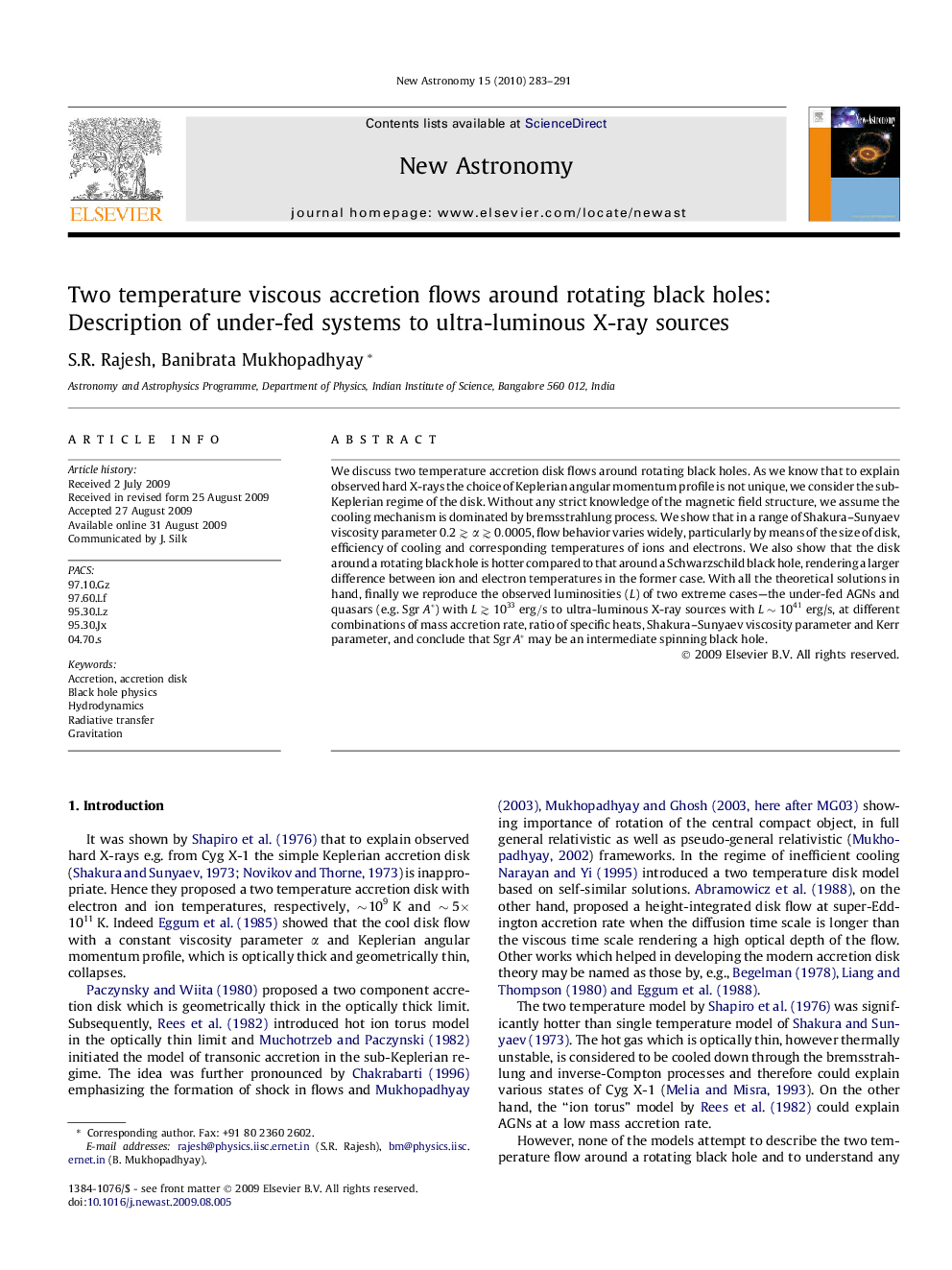| Article ID | Journal | Published Year | Pages | File Type |
|---|---|---|---|---|
| 1779756 | New Astronomy | 2010 | 9 Pages |
We discuss two temperature accretion disk flows around rotating black holes. As we know that to explain observed hard X-rays the choice of Keplerian angular momentum profile is not unique, we consider the sub-Keplerian regime of the disk. Without any strict knowledge of the magnetic field structure, we assume the cooling mechanism is dominated by bremsstrahlung process. We show that in a range of Shakura–Sunyaev viscosity parameter 0.2≳α≳0.00050.2≳α≳0.0005, flow behavior varies widely, particularly by means of the size of disk, efficiency of cooling and corresponding temperatures of ions and electrons. We also show that the disk around a rotating black hole is hotter compared to that around a Schwarzschild black hole, rendering a larger difference between ion and electron temperatures in the former case. With all the theoretical solutions in hand, finally we reproduce the observed luminosities (L ) of two extreme cases—the under-fed AGNs and quasars (e.g. Sgr A∗A∗) with L≳1033erg/s to ultra-luminous X-ray sources with L∼1041L∼1041 erg/s, at different combinations of mass accretion rate, ratio of specific heats, Shakura–Sunyaev viscosity parameter and Kerr parameter, and conclude that Sgr A∗A∗ may be an intermediate spinning black hole.
